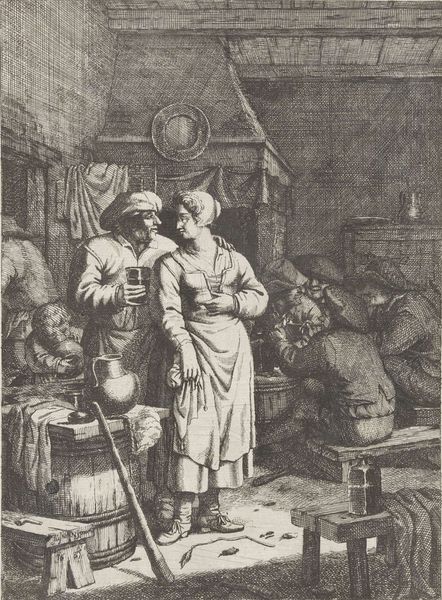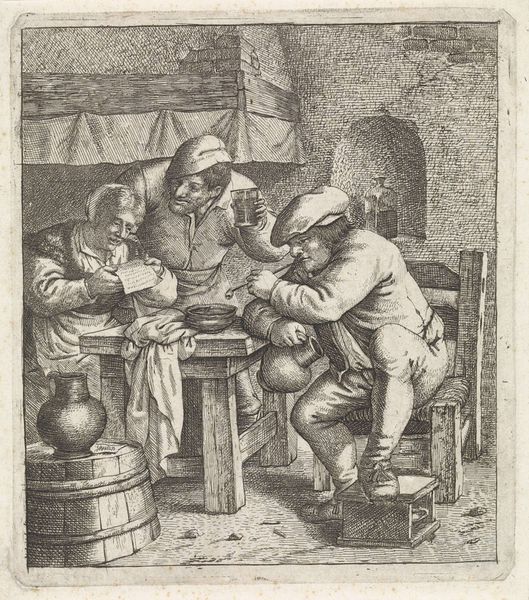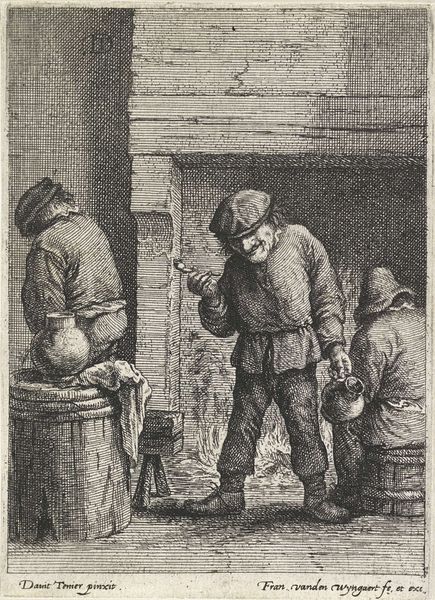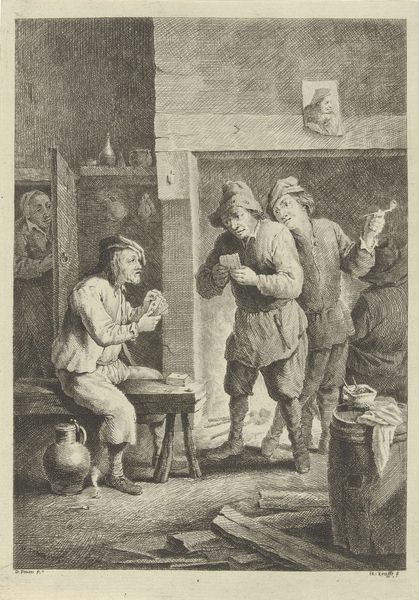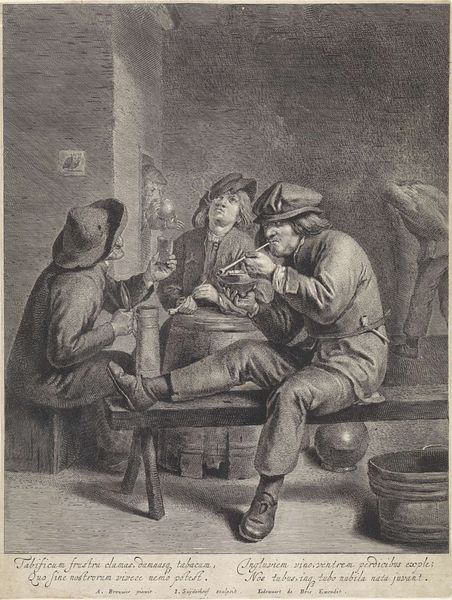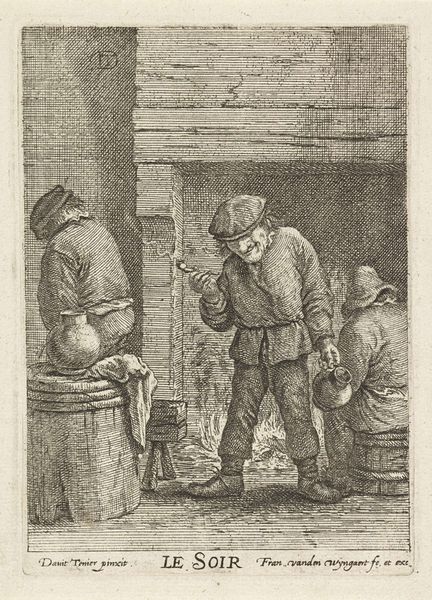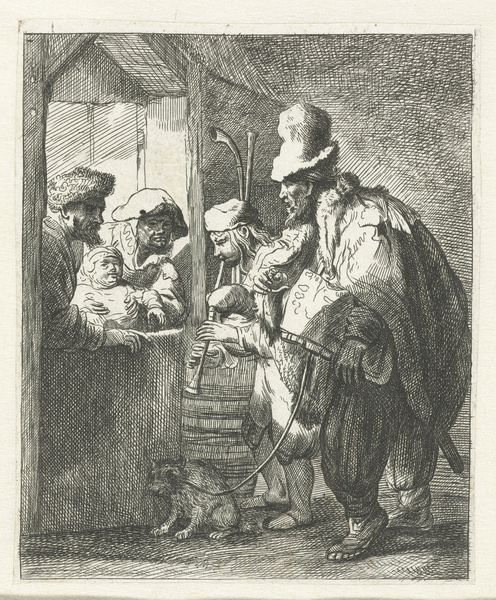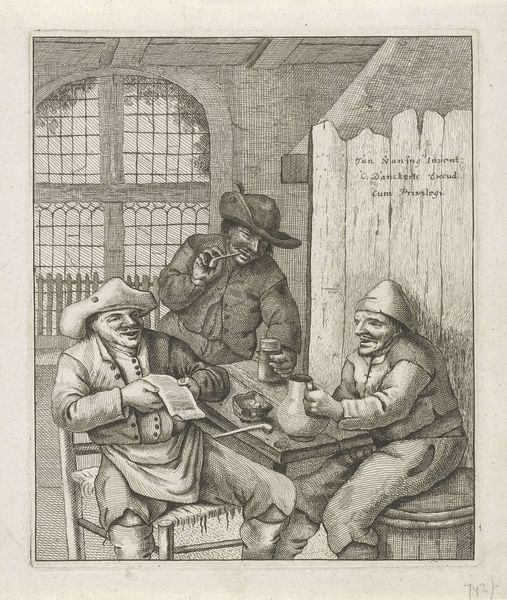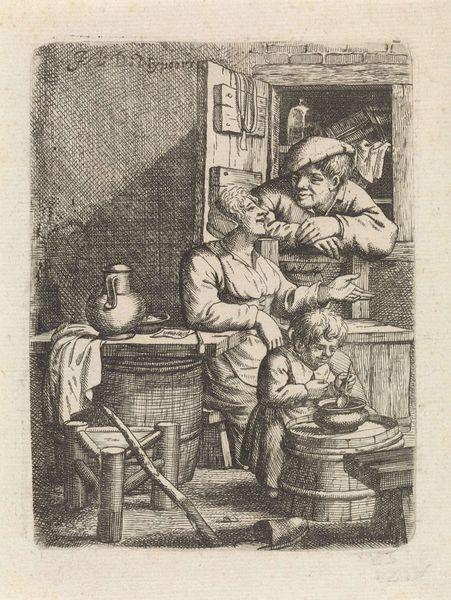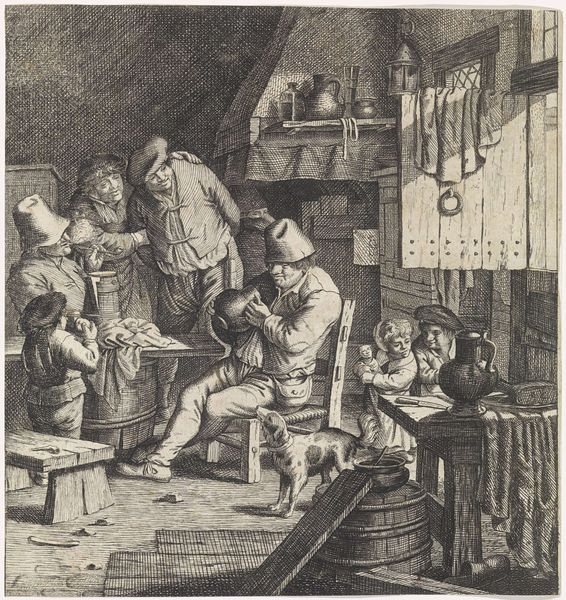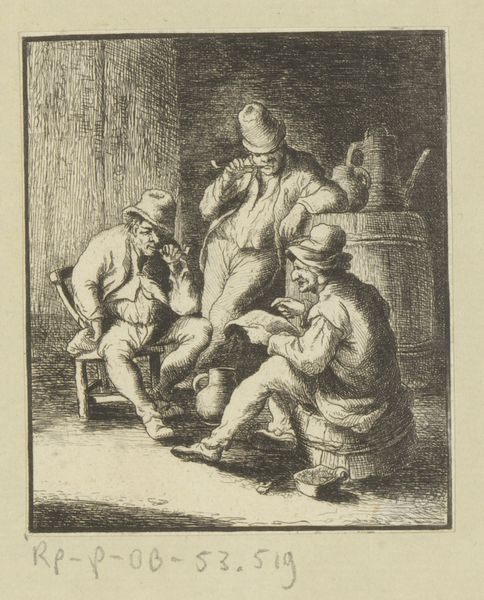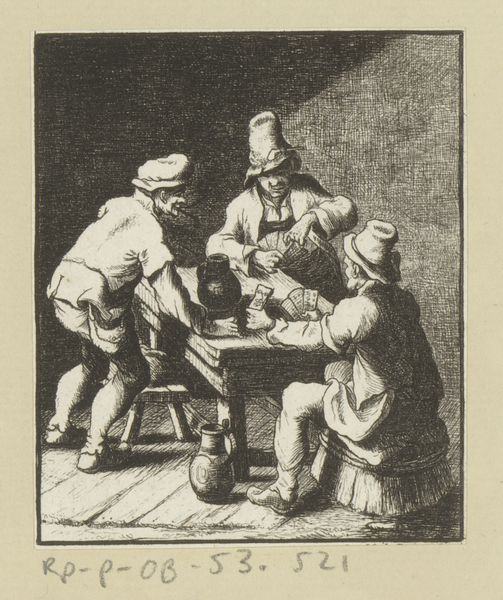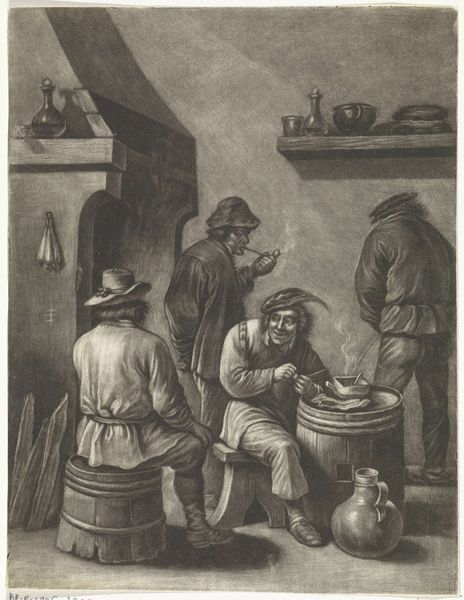
print, etching, glass
#
dutch-golden-age
# print
#
etching
#
figuration
#
glass
#
genre-painting
Dimensions: height 214 mm, width 154 mm
Copyright: Rijks Museum: Open Domain
Curator: This etching, titled "Boerenpaar en een man met een glas", roughly translated to "Peasant Couple and a Man with a Glass," dates from 1635 to 1692 and is attributed to Justus van den Nijpoort. The work exemplifies Dutch Golden Age genre painting. Editor: Immediately, I'm struck by how the density of lines and shadows create a sense of interior confinement, even oppression, in this supposed scene of joviality. Curator: Note the skillful employment of line and shadow. The artist meticulously uses these techniques to build form, detail, and texture in a scene of interior life. Observe the cross-hatching and varied densities; they provide depth while suggesting the specific lighting and atmosphere of the domestic setting. Editor: What about the implication that domestic spaces were not safe places for women during this period? I look at the woman; her body language suggests resignation more than joy. Curator: I acknowledge that her crossed arms project a sense of constraint. The relationship between the figures is definitely complex, with multiple emotional levels. But consider how the artist renders her face, the delicate lines creating a soft contrast to the sharp, angular quality of the setting. It brings an immediate intensity. Editor: Right, but she doesn't seem to have agency, and it feels naive to read a sense of depth in the formal construction of this work without understanding how 17th-century social hierarchies structured power dynamics. Look at the way the man leers at her. The print normalizes and affirms this male gaze, especially from a patriarchal standpoint. Curator: Yet it's difficult to simply interpret that moment as malicious, given its compositional arrangement and artistic execution. We might think of that "male gaze" instead as one perspective—of one observer among others caught in that scene and then depicted by Van den Nijpoort’s compositional eye. Editor: That feels like a very generous read of gender politics from 17th-century Holland. Curator: Perhaps, but considering it allows us a new dimension of reflection—and this enriches, I believe, both historical knowledge and art criticism!
Comments
No comments
Be the first to comment and join the conversation on the ultimate creative platform.
